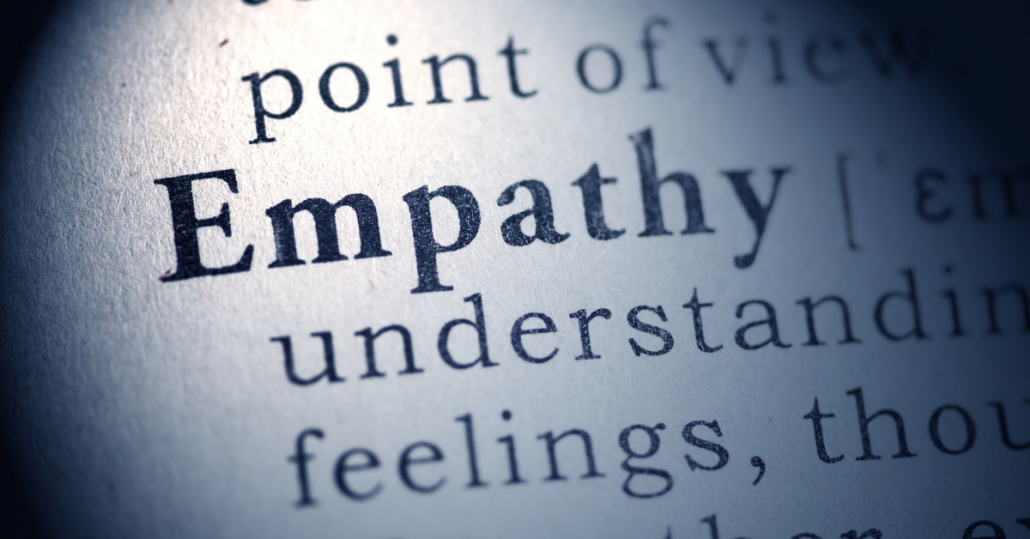Teaching Empathy Skills to Children with Autism: How to Help Them Understand and Cope with Social Situations
Children with autism often have difficulty understanding and coping with social situations. This can be very frustrating for them and their parents. Fortunately, there are ways to help them develop empathy skills.
Children affected by ASD’s may not understand the emotions that other people are feeling, or they may not know how to react in certain social scenarios. This can lead to a lot of frustration for both the child with autism and their parents or caregivers. Teaching empathy skills is an important step that will help them navigate social situations more effectively and feel more connected to the people around them!
In this article, we will discuss what empathy is, how it can be taught to children with autism, and some of the benefits of doing so. We will also provide a few tips for parents on how to help their children learn these important skills.
What is Empathy?

Empathy is a key part of human connection. Empathy is the ability to understand how someone else feels. It is a critical social skill that allows us to connect with others, communicate effectively, and resolve conflicts. Empathy is also an important foundation for moral development.
Children with autism often have difficulty understanding and expressing empathy. This can be due to a variety of factors, such as difficulty understanding the emotions of others, difficulty regulating their own emotions, or a lack of social skills. Fortunately, there are ways to help children with autism develop empathy skills.
Empathy Training
Empathy training is one approach that has been shown to be effective in helping children with autism understand and cope with social situations.
Empathy training typically involves teaching children to identify and understand the emotions of others. This can be done through stories, role-playing, or other activities. It is important to make sure that the child understands that everyone experiences different emotions and that it is okay to express them. Teaching empathy skills can also help children with autism regulate their own emotions and develop better coping techniques.
There are many benefits of teaching empathy skills to children with autism. Empathy training can help improve social skills, communication, and emotional regulation. It can also help reduce anxiety and depression. In addition, empathy training can help children with autism develop a greater sense of self-awareness and understand the perspective of others.

Where do I start?
If you are interested in teaching empathy skills to your child with autism, there are a few things you can do. First, talk to your child’s therapist or doctor about whether empathy training is right for your child. Then, find some resources that can help you get started. There are many books, articles, and websites that offer tips and advice on teaching empathy skills to children with autism.

Books:
5 Great Books to Teach Young Children About Empathy
Children’s Books That Teach Empathy
Encouraging Empathy: How to Teach Apologies to Children on the Autism Spectrum
Websites:
5 Ways To Help Your Child With Autism Show Empathy
Teaching Empathy Skills to Children With Autism
Finally, be patient and keep in mind that it may take some time for your child to learn these new skills. Empathy is a complex social skill, but with time and practice, your child can develop the ability to understand and cope with social situations.
Understanding and Reciprocating Empathy
When we think about empathy, we often think of it as feeling the same emotions as someone else. However, empathy also includes understanding another person’s feelings and perspectives and responding in a way that is helpful to them. For example, if your friend is sad because they failed a test, you might not feel exactly the same way, but you can still be empathetic by offering words of encouragement and understanding.
There are several elements involved in understanding and showing empathy to others:
-Recognize the other person’s feelings: This includes being able to read facial expressions and body language, as well as hearing the tone of someone’s voice.
-Understand the other person’s hopes, dreams, and/or expectations: This requires being able to see things from another person’s point of view and understand what is important to them.
-Have the emotional experience to relate personally to another’s feelings: This means having the ability to feel empathy or understanding and sharing the emotions of another person.
-Have the tools to physically and verbally express empathic feelings: This includes having the ability to communicate effectively with others.
-Share a cultural understanding that displays of empathy are socially appropriate: This means being aware of social norms and expectations around empathy.

Empathy is teachable!
While some people are naturally more empathetic than others, empathy is a skill that can be learned and developed. Just like any other skill, it takes time and practice to get better at it. But with patience and effort, anyone can learn to be more empathetic.
If you’re interested in teaching empathy skills to children with autism, there are a few things you can do to help them understand and cope with social situations.
-Start by teaching them about emotions: Help them identify and label different emotions, both in themselves and others. This will give them a foundation for understanding how empathy works.
-Model empathetic behavior: Children learn best by example. When you model empathetic behavior, they will be more likely to imitate it.
-Encourage empathetic actions: praise children when they act empathetically towards others. This will reinforce the behavior and help them understand its importance.
-Provide opportunities for practice: create opportunities for children to practice empathy in safe and controlled environments. This could involve role-playing different social situations, or discussing empathetic actions after they’ve witnessed them.
Teaching empathy skills to children with autism can help them understand and cope with social situations. By starting with the basics of emotions, modeling empathetic behavior, and providing opportunities for practice, you can help children develop this important skill.

Awareness and Processing
Cognitive empathy, or the ability to understand another person’s perspective, is an important social skill. People with autism may have difficulty understanding and responding to the emotions of others, but there are ways to help them develop this skill.
Affective empathy, on the other hand, is more difficult to pin down. Some studies suggest people with autism have a higher capacity for empathetic concern—feeling compassion and distress in response to another’s suffering—while others show they are less likely to mimic or mirror the emotions of those around them.
This disconnect between cognitive and affective empathy can lead to challenges in social situations. If someone with autism is unable to understand why another person is feeling a certain way, they may have trouble responding in an appropriate manner. For example, they may not know how to comfort a friend who is sad or react appropriately if someone is angry with them.
However, while cognitive empathy can be lower in people with autism, affective empathy—which is based on instincts and involuntary responses to the emotions of others—can be strong and overwhelming. Picking up on others’ emotions and experiencing them internally can feel overpowering and confusing, which may cause a person to shut down and withdraw from crowds.
By giving them the tools they need to respond empathetically, we can make the world a little bit more understandable – and a little bit more welcoming – for them.
Skill Development

While the research on empathy and autism is still emerging, there are a few things we can do to help children with autism develop these skills.
Here are a few suggestions:
-Encourage your child to practice observing and understanding emotions in others. This can be done through books, movies, or everyday conversations. Help them label the emotions they see and talk about how those emotions might make someone feel.
-Talk about your own emotional experiences and how you cope with difficult situations. This will help your child understand that everyone experiences a range of emotions and that it’s okay to feel them. It will also give them some ideas for how they can cope with their own emotions.
-Role-play social situations with your child. This can help them practice identifying and 43responding to the emotions of others. You can also use puppets or stuffed animals to act out different scenarios.
-Encourage your child to be empathetic towards others. This includes both understanding their feelings and caring about their wellbeing. Help them see how their actions can affect others and how they can make a positive difference in the world.
By teaching children with autism empathy skills, we can help them better understand and cope with social situations. These skills will also allow them to form deeper relationships and connect with others in a more meaningful way. If you have a child with autism, try incorporating some of these suggestions into your daily routine. With a little practice, your child will be on their way to a more empathetic future.

Key takeaways
Empathy skills are extremely important for children with autism. They can help them connect with other people, understand their feelings, and respond appropriately in social situations.
If you are a parent of a child with autism, we encourage you to call Behavior TLC and speak to one of our team members about empathy training. We offer customized programs that can help your child learn these essential skills and improve his or her quality of life.
Resources:
https://www.relias.com/blog/autism-social-skills-training-strategies-for-developing-empathy
https://www.verywellhealth.com/do-people-with-autism-lack-empathy-259887
https://www.ncbi.nlm.nih.gov/pmc/articles/PMC2649842/
https://online.simmons.edu/blog/how-to-apologize-children-on-autism-spectrum/


